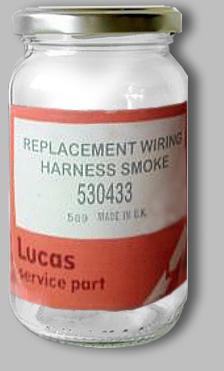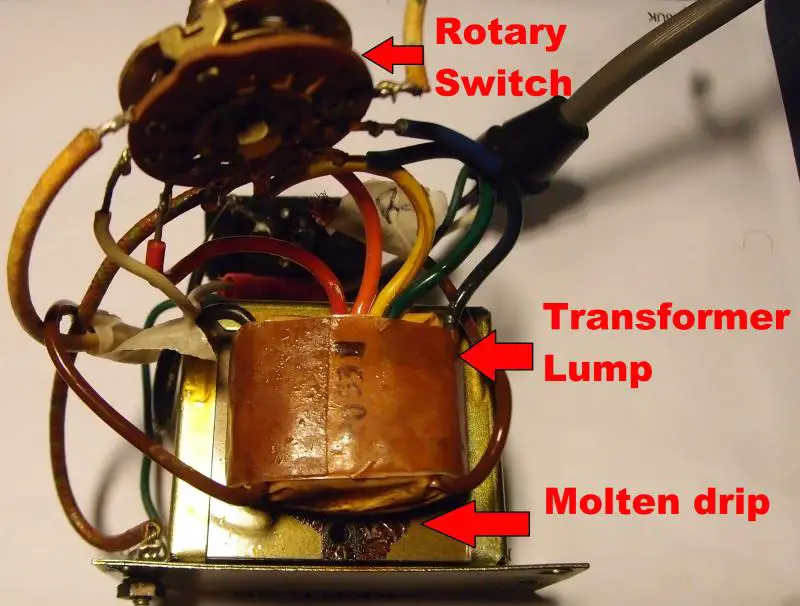Hi DIYnot, I've got a new problem I thought you may be able to help me with. I recently bought an old (~'70s?) microscope from the USA and after eagerly awaiting it's arrival it finally arrived today. By chance I had a universal adaptor upstairs and waisted no time plugging it in. Upon flicking the switch the microscope's power supply (only for the bulb beneath) emitted a loud buzzing noise. It was on for 5-10 seconds before I rushed to turn it off but I fear the damage is already done, when I flicked the switch the buzz stopped but I was struck by a strong smell reminiscent of burning plastic 
Before plugging it in I had already considered a difference in voltage, but assured myself that I had looked it up previously and found that these days the UK & USA both used ~230V... of course my memory served me wrong, the power supply is rated at ~115V, as are all USA consumer electricals.
I read somewhere that the power supply 115V to 6.5V transformer, with a variable rheostat (I don't know if that's accurate). The outputs are 4.5, 5, 5.5, 6.5 or 7.5V, controllable by a knob on the front. I couldn't find out if that was AC or DC. If my memory serves me correctly, the power light on the power supply stayed on until I disconnected the power. I think the microscope's incandescent bulb didn't illuminate and appears to have survived (element is intact).

So my questions are: Can anyone theorize what damaged I may have caused to the power supply by running double the voltage through it? What component could have caused the burning plastic smell? Is there any chance it has survived or that I could just replace a component and reuse, this time with a step-down transformer?
If I am to replace the whole thing, I don't think I will buy an exact replacement. I believe it is a simple device, essentially just a transformer and a variable resistor. So what exactly would I be looking for? Do you think it's output is likely to be AC or DC? I've read both work with incandescent bulbs, but it can effect the brightness/longevity of the bulb...
Also I have something like the plug below, could that work? It's DC and supplies some voltages with in the correct range:

I'm sorry for the barrage of questions, if you can answer any of them I will really appreciate it
Before plugging it in I had already considered a difference in voltage, but assured myself that I had looked it up previously and found that these days the UK & USA both used ~230V... of course my memory served me wrong, the power supply is rated at ~115V, as are all USA consumer electricals.
I read somewhere that the power supply 115V to 6.5V transformer, with a variable rheostat (I don't know if that's accurate). The outputs are 4.5, 5, 5.5, 6.5 or 7.5V, controllable by a knob on the front. I couldn't find out if that was AC or DC. If my memory serves me correctly, the power light on the power supply stayed on until I disconnected the power. I think the microscope's incandescent bulb didn't illuminate and appears to have survived (element is intact).

So my questions are: Can anyone theorize what damaged I may have caused to the power supply by running double the voltage through it? What component could have caused the burning plastic smell? Is there any chance it has survived or that I could just replace a component and reuse, this time with a step-down transformer?
If I am to replace the whole thing, I don't think I will buy an exact replacement. I believe it is a simple device, essentially just a transformer and a variable resistor. So what exactly would I be looking for? Do you think it's output is likely to be AC or DC? I've read both work with incandescent bulbs, but it can effect the brightness/longevity of the bulb...
Also I have something like the plug below, could that work? It's DC and supplies some voltages with in the correct range:

I'm sorry for the barrage of questions, if you can answer any of them I will really appreciate it




